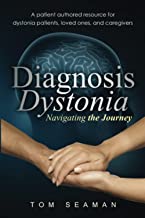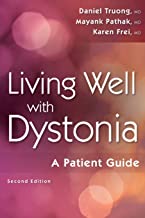Dystonia
Resources for Patients and Caregivers
Involuntary muscle contractions that cause repetitive or twisting movements.
Dystonia may affect one or more parts of the body, and sometimes the entire body. The condition can be mild or severe.
The main symptom is involuntary muscle contractions that result in slow repetitive movements, cramps, or abnormal posture.
Treatments may include drugs, injections, and physical therapy.
Cluster Number:
Wiki Number: 14-Dystonia-Medication-Induced
Diagnosis:
US Patients:
World Patients:
Sex Ratio:
Age Onset:
Brain Area:
Symptoms: uncontrolled muscle spasms and contractions after antipschotic medicines.
Progression: can become progressively worse
Causes:
Medications:
Therapies: reduce or change medications
Youtube Video: Dystonia-Generalized Dystonia
Amazon or Library Book: Diagnosis Dystonia
Amazon or Library Book:
Living Well with Dystonia
Click the book to link or buy from Amazon.
Click the book to link or buy from Amazon.


